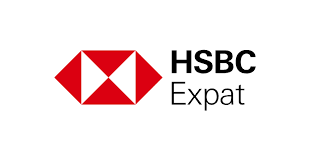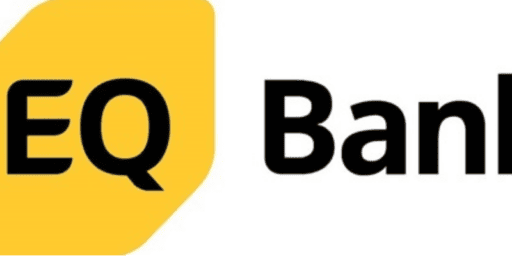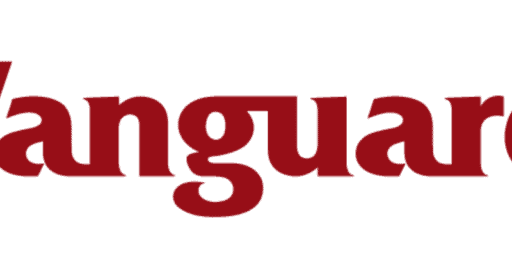Smith Manoeuvre/Dividend Portfolio Year End Update 2013
For those of you just joining us, listed below is my portfolio that is leveraged with money borrowed from my home equity line of credit (HELOC). As the money borrowed is used to invest, the interest charged is tax deductible. I write an update every so often to show new positions added along with any market gains/losses. For more details on the strategy and procedure, check out my modified smith manoeuvre strategy and my comparison of self directed stock brokerages.
With this 2013 year end update, it has been about five months since the last update (July 2013) with a bit of activity in the leveraged portfolio. I added to a few existing positions without creating any new positions.
I added to existing positions:
- First Capital Realty (FCR), Calian Technologies (CTY), and Emera (EMA).
Since this portfolio is focused on dividend growth stocks, the portfolio did not disappoint where numerous dividend paying positions increased their distributions since the last update. The dividend increases came from:
- Royal Bank (RY), Scotia Bank (BNS), Bank of Montreal (BMO), TD Bank (TD), Fortis Properties (FTS), Enbridge (ENB), Ensign Energy Services (ESI), Pason Systems (PSI), Corus Entertainment (CJR.B), Imperial Oil (IMO) and Emera (EMA).
It doesn’t happen very often, but the portfolio held a position that significantly decreased their dividend. Encana (ECA) decreased their dividend from $0.80 to $0.28. The natural gas business has been tough over the last number of years, but I will continue to hold for the time being. In other news, Brookfield Office Properties (BPO) was recently acquired by Brookfield Properties Partners (BPY.UN). I sold off my shares because BPY.UN is an income trust that pays Return of Capital (ROC) on their distributions.
My dividend watch list remains similar where I am looking to increase my positions in TRP, CU, IMO, SNC, BMO, TD and possibly add new positions in TMX Group (X), Cineplex (CGX), Canadian National Railway (CNR) and Shoppers Drug Mart (SC) when/if their valuations become attractive (let me know if there are any ideas that I’m missing out on).
The Smith Manoeuvre Portfolio as of December 23, 2013 (prior to open) – note that any changes to the portfolio are indicated in bold.
| Stock | Symbol | Shares | Avg Buy Price | Total | Div/Share | Yield |
| Royal Bank | RY.T | 100 | $48.39 | $4,838.99 | $2.68 | 5.54% |
| CIBC | CM.T | 45 | $67.14 | $3,021.25 | $3.84 | 5.72% |
| Power Financial | PWF.T | 155 | $32.11 | $4,976.64 | $1.40 | 4.36% |
| Scotia Bank | BNS.T | 105 | $41.91 | $4,400.52 | $2.48 | 5.92% |
| Manulife Financial | MFC.T | 125 | $33.12 | $4,139.48 | $0.52 | 1.57% |
| Fortis Properties | FTS.T | 150 | $25.63 | $3,843.98 | $1.28 | 4.99% |
| TransCanada Corp | TRP.T | 100 | $33.50 | $3,349.74 | $1.84 | 5.49% |
| AGF Management Limited | AGF.B.T | 50 | $22.71 | $1,135.49 | $1.08 | 4.76% |
| Bank of Montreal | BMO.T | 25 | $44.17 | $1,104.24 | $3.04 | 6.88% |
| Husky Energy | HSE.T | 135 | $32.53 | $4,391.27 | $1.20 | 3.69% |
| TD Bank | TD.T | 50 | $48.24 | $2,412.23 | $3.44 | 7.13% |
| Enbridge | ENB.T | 130 | $28.39 | $3,690.38 | $1.40 | 4.93% |
| TransAlta | TA.T | 50 | $21.47 | $1073.49 | $1.16 | 5.40% |
| First Capital Realty | FCR.T | 222 | $11.72 | $2,601.03 | $0.84 | 7.17% |
| Canadian Utilities | CU.T | 100 | $18.20 | $1,819.99 | $0.97 | 5.33% |
| Ensign Energy Services | ESI.T | 200 | $14.98 | $2,995.98 | $0.47 | 3.14% |
| Mullen Group | MTL.T | 200 | $17.98 | $3,596.97 | $1.20 | 6.67% |
| Rogers Communications | RCI.B.T | 100 | $34.39 | $3,439.48 | $1.74 | 5.06% |
| George Westin Ltd | WN.T | 50 | $68.64 | $3,441.99 | $1.66 | 2.41% |
| Pason Systems | PSI.T | 200 | $13.97 | $2,793.98 | $0.56 | 4.01% |
| Corus Entertainment | CJR.B.T | 100 | $19.87 | $1,996.99 | $1.02 | 5.11% |
| Thompson Reuters | TRI.T | 90 | $33.40 | $3,006.18 | $1.30 | 3.89% |
| Canadian Pacific Railway | CP.T | 30 | $54.23 | $1,626.99 | $1.40 | 2.58% |
| Canadian Oil Sands | COS.T | 150 | $19.14 | $2,871.48 | $1.40 | 7.31% |
| Leons Furniture | LNF.T | 200 | $12.06 | $2,412.98 | $0.40 | 3.32% |
| Encana | ECA.T | 100 | $18.82 | $1,881.99 | $0.28 (drop) | 1.49% |
| Transcontinental | TCL.A.T | 200 | $11.32 | $2,263.98 | $0.58 | 5.12% |
| Calfrac Well Services | CFW.T | 150 | $24.24 | $3,635.98 | $1.00 | 4.13% |
| Baytex Energy Corp |
BTE.T | 35 | $42.98 | $1,504.14 | $2.64 | 6.14% |
| Finning International | FTT.T | 200 | $22.95 | $4,589.98 | $0.61 | 2.66% |
| SNC Lavalin Group | SNC.T | 50 | $38.55 | $1,927.49 | $0.92 | 2.39% |
| Crescent Point Energy | CPG.T | 50 | $37.13 | $1,856.49 | $2.76 | 7.43% |
| Bird Construction | BDT.T | 250 | $13.12 | $3,280.98 | $0.76 | 5.79% |
| Calian Technologies | CTY.T | 150 | $20.55 | $3,082.98 | $1.12 | 5.45% |
| Imperial Oil | IMO.T | 50 | $42.81 | $2,140.49 | $0.52 | 1.21% |
| Potash Corp | POT.T | 50 | $40.13 | $2,006.49 | $1.40 | 3.49% |
| Emera Inc | EMA.T | 100 | $31.05 | $3,104.98 | $1.45 | 4.67% |
| BCE Inc | BCE.T | 50 | $41.68 | $2,083.99 | $2.33 | 5.59% |
More Stats
- Total Cost Base of Equities (inc. fees): $108,341.70 (vs. $107,230.06)
- Market Value of Equities (not including dividends or cash): $135,090.32 (vs. $124,043.60)
- Total Dividends / Year: $5,008.58 (vs. $4,977.72)
- Portfolio Dividend Yield: 4.62% (vs. 4.64%)
Sector Allocation (based on market value)
- Financials: 24.55% (vs. 23.04%)
- Utilities: 8.73% (vs. 8.57%)
- Energy: 32.30% (vs. 32.94%)
- Resources: 0.00% (vs. 0.00%)
- Real Estate: 2.86% (vs. 4.42%)
- Consumer/Telecom: 14.11% (vs. 13.82%)
- Other: 17.45% (vs. 17.21%)
Investment Return for 2013
This account is where I get most of my Canadian equity exposure, as such, it’s probably fair to compare it to the TSX benchmark. This account ended 2012 with a total value of $108,000 (including cash). Accounting for the $5,000 deposits in February and May 2013 and an ending portfolio value of $136,000 (including cash), the XIRR return works out to be 15.5% including dividends. With the TSX returning approximately 10% (including dividends), my portfolio handily beat the index by about 55%. I suspect that out-performance will not last if Canadian mining stocks pick up again as this portfolio lacks mining exposure.
How did this portfolio do against the Canadian dividend achievers index as modeled by the iShares CDZ ETF? CDZ did well and returned about 11% (including dividends) for 2013 which is very comparable to what the TSX returned, but surprisingly lagged my portfolio by about 4.5%. The strategy of picking dividend stocks with a history of dividend increases, but only buying when their yields reach a certain level (ie. when the stock price drops), appears to be working in the short term.
Common Questions:
Why the high concentration in financials and energy?
With regards to sector allocation, you may notice that this portfolio is fairly concentrated in financials and energy. Note though that this is one of my accounts where I treat all of my accounts as one big portfolio. In other words, my international and other sector equity exposure are in other accounts.
Why don’t you use a dividend ETF instead?
Couple of reasons, first, most Canadian dividend ETFs hold stocks that distribute return of capital which can affect the tax deductibility of the investment loan. Second, the MER eats into the dividend. I keep the expenses in this portfolio very low through buying but rarely selling.
Should I start the Smith Manoeuvre?
There have been a lot of readers who have mentioned that they are interested in a leveraged portfolio. Over the long term it may be lucrative. However, over the short term, equities are volatile and can put the portfolio deep in the red. My portfolio during 2008 is a prime example of what can happen. If you can’t stomach losing 20-30% in the portfolio in any given year, then your risk tolerance isn’t suited for leveraged investing. Here is an article I wrote answering a reader question “Should I Start the Smith Manoeuvre?”
Disclaimer: The securities mentioned in this post are not recommendations to buy or sell and should be used for informational purposes only.
I've Completed My Million Dollar Journey. Let Me Guide You Through Yours!
Sign up below to get a copy of our free eBook: Can I Retire Yet?










How can you not have any Computer Modelling Group TSE:CMG yet?
They passed $1 Billion last year and have gone up almost 10x in 7 years plus paid dividends.
@Greg, ok you got me curious and went back to some old data. Looking at the link that you gave me, going back 5 years (beginning of 2009) to now, the TSX composite returned around 10.9%. My SM portfolio’s XIRR is around 14% since the beginning of 2009.
@Greg, thanks for the update. Unfortunately, it’s only the past couple of years where I have been tracking my returns. However, I will dig back to my old data to see how the account is doing.
Hi FT. Sorry if you’ve already covered this question previously. Am curious about your decision to show the yield percent based on average purchase price instead of the current stock price. To me it seems the current yield would be more useful. Consider a more extreme example where a stock has gone up a lot, and based on purchase price may be yielding 20% say, however based on current price may be yielding 1%. In such a case it would likely be better to sell and buy something with a higher yield.
@Jason, you make a good point. I display yield on cost to demonstrate the power of growing dividends. It’s more of a psychological thing.
Nice Portfolio FT. Are you considering to increase position in Husky Energy? It seems HSE going to have a great year in 2014.
@On Demand, I have quite a bit of Husky energy already. If HSE gets cheap again, I may add but right now with the run up, I won’t be adding.
looking good. do you see yourself ever rebalancing on a quarterly or annual basis? not so much to add or remove securities but to maintain your risk profile?
@fiscally fit, I do not rebalance this portfolio, I just buy when stocks get cheap.
Nice to see some analysis of returns compared to benchmarks. According to http://advisoredition.cpms.com/src/php/public/perf_display.php the TSX total return is actually 11% year to date.
Can you calculate your longer term returns (3 year, 5 year)? That would give a better idea of how your strategy is doing.
I got in to Calian a few days before the big bump in Sept. I quite like the stock, it really flies under the radar though and has some very low volume days which can lead to decent swings in price.